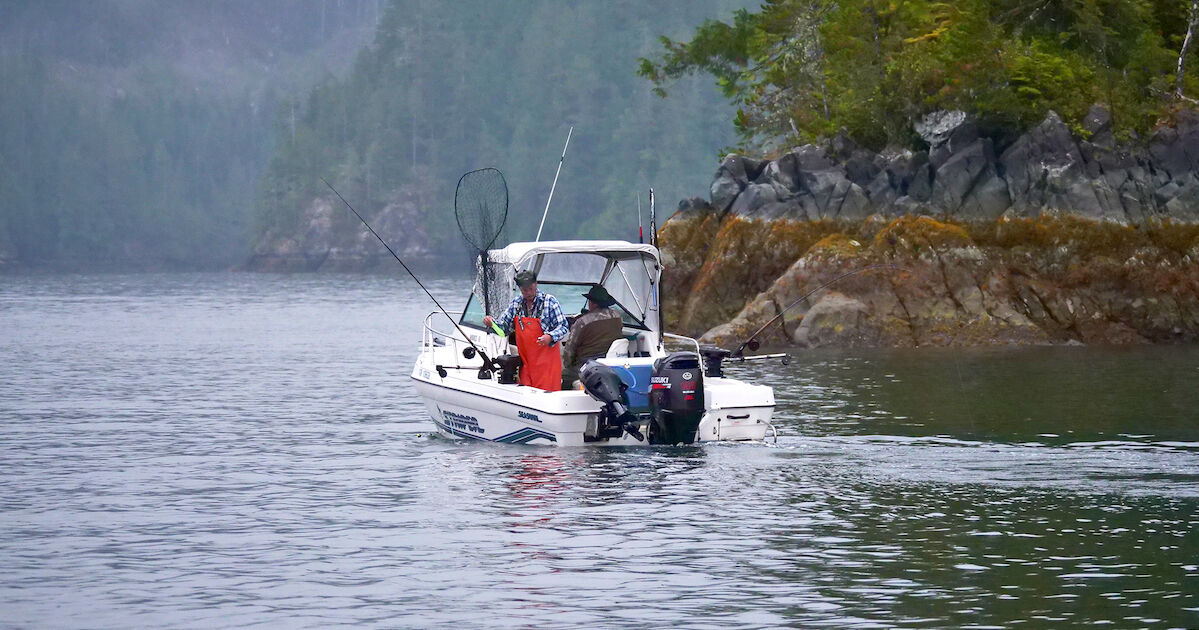
Knowing the right time to fish for salmon is one of the first things anglers learn. For example, feeding salmon bite for roughly an hour before, through, and an hour after slack tide, because that’s when the food chain is most active. However, there are nuances. Mature salmon, particularly Chinook, bite best on the last hour of the ebb right into the teeth of the flood current. No one really knows why, though we do know they use the flood current to accelerate travel and to conserve energy for the difficult ascent to the spawning grounds. This article will expand on these basics by explaining how to use current to your advantage, whether you are trolling for feeders, homeward-bound adult Chinook and coho, or other salmon species.
Feeder Chinooks
Feeder Chinooks dominate salmon fishing from November until the end of June, depending on location. The trick is finding exactly where they are holding. That generally depends on where the feed is, which in turn is determined by the stage and strength of the current. When it runs hard, the feed lays flat on the ocean floor, appearing on your fish finder like a log on the bottom. Or, it may look like a dark mass adjacent to the lee side of an underwater shelf. Slack water coincides with ringing the dinner bell. Forage species rise up in columns searching for tiny creatures to eat, and the salmon move in to feed on them. But feed moves around, so successful anglers need to find the salmon quickly before strengthening currents turn off the dinner bell. Covering more ground equals encountering more salmon and producing more strikes. The best way to do this is troll with the current flow, not against it.
Scenario 1
Land masses and large man-made structures deflect current and create ideal back eddies for trolling. In this example, an extended point of land creates a perfect back eddy that’s large enough for boats to troll in. The trick is to go with the current. On the outside tack, which is closest to the strongest current, pick a trolling line near the fast water but not in it. Troll parallel to the fast water before turning into the bay, then tack along the beach until reaching the start point. The entire back eddy can be fished in a pattern that’s similar to mowing a lawn. When a fish is hooked, mark that coordinate on your GPS. Then, after landing the fish, return to the marked position before resetting gear.

Scenario 2
Some popular fishing locations don’t have visible structure to create surface back eddies like in Scenario 1. Underwater shelves or steep-sided banks fall into this category. They are often located well away from land and can be swept by strong tidal currents. The back eddies are still there, but they are vertical not horizontal. The effective fishing time can also be shorter, because there’s no above-water structure to blunt the current’s strength.
Salmon and feed might still be suspended in the back eddy, however, and they may be in a biting mood if you can get your gear in front of them. Here’s a technique for working those steep edges: Determine the current direction and slowly troll up to the edge of the dropoff, then quarter into the flow and slide along the dropoff. Even if the current pushes you off the edge, just work up to it again and continue to slide. When you reach the end. troll back to the start position and repeat the tack.
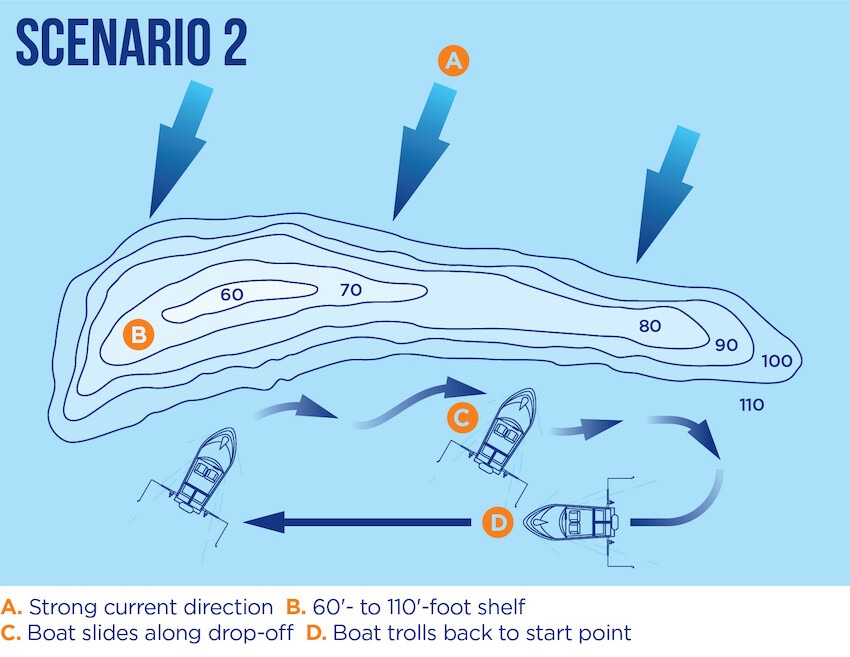
Mature Migrating Chinook
Fishing the Major Highways
This section does not apply to terminal area Chinooks, whose bite periods are triggered by different factors. It does apply to adult Chinook that are on major migratory routes but still some distance from the river mouth. Well-known corridors include the west coast of Vancouver Island, Johnstone, and the Juan de Fuca Strait. These fish are on a tight schedule to arrive at a single destination—the spawning grounds. So anglers only get one crack at them as they pass through the fishing area. The best bites occur from just before low water, through the slack, and well into the flood. Here’s how the strategy works.
Scenario 3
Fishing the flood effectively means trolling in both directions, as long as the current velocity allows. When the velocity becomes too strong, try to remain in place by keeping the bow pointed into the flow. You may need to up your trolling speed and slow your lure action accordingly, particularly if you are using bait. Looking for fish becomes less important than maintaining position, because the salmon are coming at you on the incoming tide. This is really effective when the flood forces fish along the shoreline or pinches them into a corridor as they navigate around points of land. These choke points are always productive.
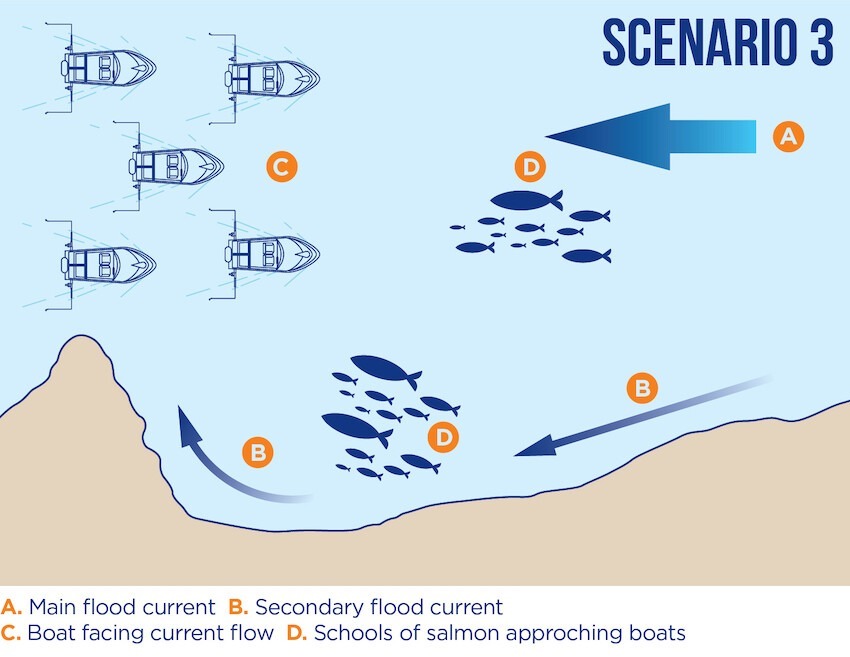
Fishing the Secondary Routes
When Chinook turn into long inlets, or sounds like Nootka or Barkley, the current velocities are less severe, allowing anglers to troll in both directions. Interestingly, while the flood is still the best bet, Chinook do bite on the ebb with consistency. Anglers can further improve their chances on the ebb by trying this tactic.
Scenario 4
Maturing Chinook can be caught on the ebb tide as they near the river mouth. This light bulb went on for me many decades ago while fishing Nootka Sound. We noticed that the ebb current had pushed bits of debris and occasional schools of feed into small, but deep, indentations along the steep shoreline. So we decided to make a few passes through these pockets. It didn’t take long before we were into fish. Since then, the tactic has consistently paid off. It’s an easy plan to execute. Troll slightly off the beach on the flood, but fish tight to shore on the ebb, and work the nooks and crannies.
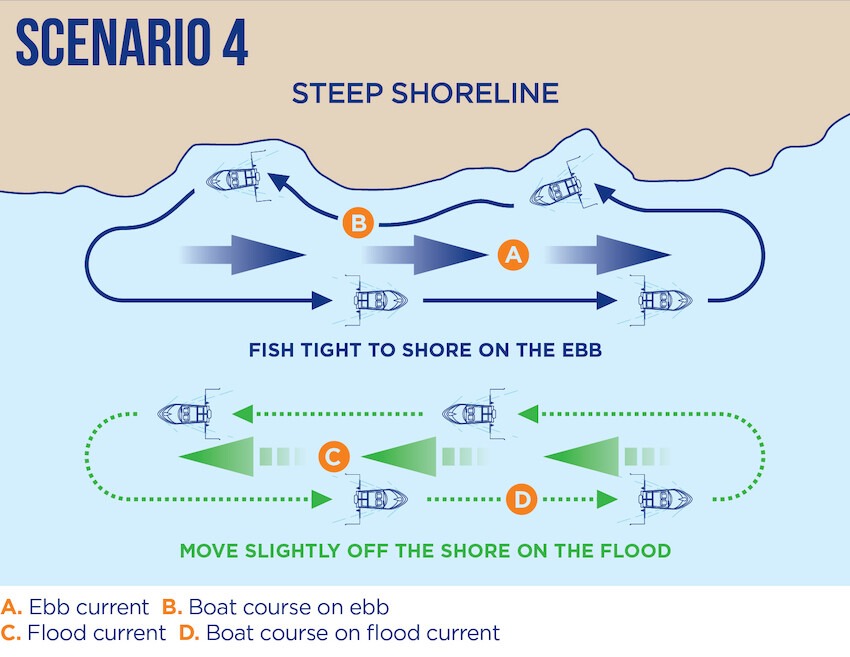
Coho
Coho are very different than Chinook, pinks, sockeye and chums. The other four species have reasonably reliable habits, while coho are consistently unpredictable. Migration patterns change from year to year, the time and location of the feed changes daily (even hourly), and picking effective lures can drive anglers crazy. These characteristics make it difficult to find guidelines that explain how the currents affect coho angling success. For summer coho, most of the old truisms still apply. Fish for them on the edge of the tide lines, look for fast water, change speeds, zigzag erratically, and keep changing lures until you find a winner. Over the years I’ve caught coho at speeds ranging from dead slow to ripping Buzz Bombs on the surface. There is, however, at least one consistent way to take advantage of the current, particularly for bigger, late-season adults. It should work in any location where you have a current velocity that can impede trolling and lots of open water to search for coho.
Scenario 5
Start fishing an hour or so before low water and continue fishing well into the flood current. Trolling for coho requires covering a lot of water. Sitting in a stationary position, which is effective on migrating Chinook, doesn’t work well for coho. Start near shore EBB and tack out towards deeper water, angled slightly into the current. Anywhere you hit fish, circle back and work it for a few minutes, but don’t stay long. It’s better to resume the outward tack and increase your chances of intercepting more coho. During slack water, fish any pattern you want. When the flood begins, turn back towards shore. Quartering slightly into the flood current, keep heading to shore and concentrate effort in areas where you hit fish. This strategy has three advantages: It covers a lot of ground, it covers various depths, and finally it saves a chunk of money on gas because you should finish close to your start point.
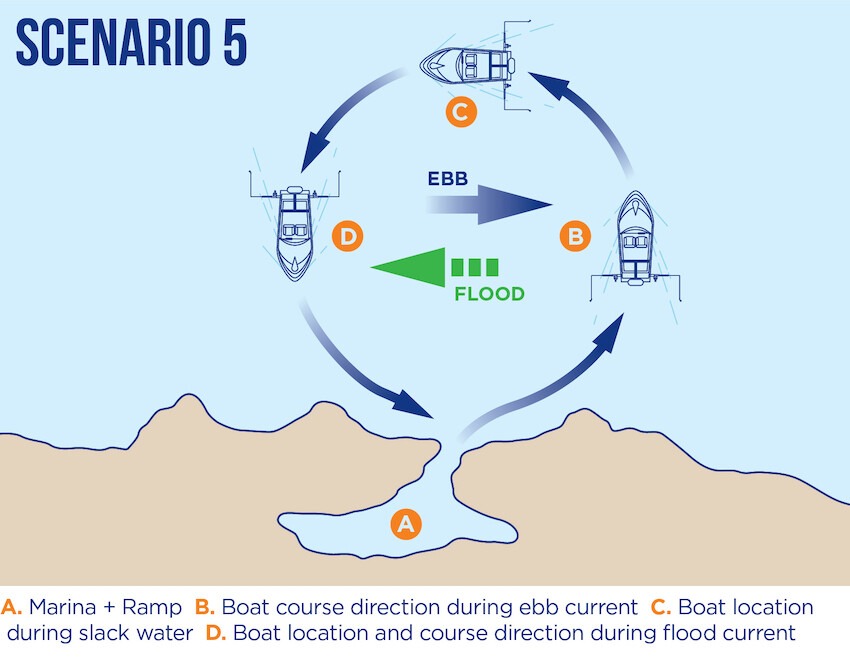
Chum, Pink & Sockeye
Chum Salmon
Chum fishing requires very slow trolling, so focus on slack water and then move into a quiet back eddy when the current starts to strengthen. The feeder Chinook scenario (Scenario 1) works here. Look for jumpers. They have a distinctive low jump and always land on their sides.
Sockeye Salmon
Sockeye will take gear at normal trolling speed, so this gives anglers a bit more leeway regarding how much current velocity they can fish in. However, strong currents will eventually force anglers into calmer water.
Pink Salmon
I don’t think current velocity is an issue for pinks, because the dominant Fraser River runs return in the millions. This makes them ridiculously easy to catch regardless of current conditions. So either fish around the tide change or, if you can’t avoid strong current scenarios, try the coho tactic described in Scenario 5.
This article appeared in Island Fisherman Magazine. Never miss another issue—subscribe today!
One Comment
Leave A Comment
Visit the Store
$34.99
$34.99
Featured Catch

Joel Unickow halibut (Photo: Rob Frawley Lucky Strike Sportfishing Tofino)








Thanks,
As someone raised on Lake Erie, this info is priceless. ✓